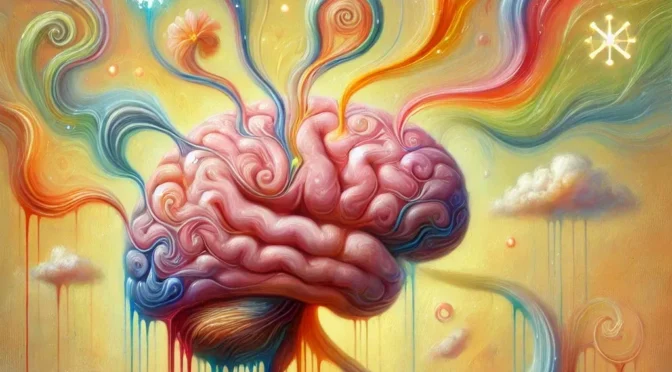“The key to control is not in controlling external events, but in controlling your own mind.“
Epictetus
The Wisdom of Stoicism
Stoicism is a school of Hellenistic philosophy founded in Athens by Zeno of Citium in the early 3rd century BC. Stoicism teaches the development of self-control and fortitude as a means of overcoming destructive emotions. The philosophy asserts that virtue (such as wisdom) is happiness and judgment should be based on behavior, rather than words. Here’s a look into Stoicism:
Core Principles of Stoicism
- Logic and Perception:
- Stoics emphasize the importance of logic and the objective perception of the world. They believe in perceiving reality as it is, without the influence of personal bias or emotional reactions.
- Virtue as the Sole Good:
- The primary principle in Stoicism is that virtue alone is good and that it is sufficient for happiness. Virtue includes wisdom, justice, courage, and moderation.
- Control and Indifference:
- Stoics distinguish between things that are within our control (our own judgments, impulses, desires, and aversions) and those that are not (wealth, health, reputation). They strive to remain indifferent to what lies outside their control.
Practices of Stoicism
Mindfulness (Prosochē)
Awareness of Judgments:
- Stoics believe that our judgments about impressions—our interpretations and the meanings we ascribe to external events—are the root of our emotions and actions.
- Practicing Prosochē involves observing these judgments closely and critically, asking whether they align with reality and virtue.
Present Moment Focus:
- By concentrating on the present moment, Stoics seek to avoid being swept away by thoughts of the past or anxieties about the future.
- Mindfulness is a tool for remaining in the present, ensuring that one’s attention is not divided or distracted from the task or situation at hand.
Rational Use of Impressions:
- Impressions are seen as neither good nor bad in themselves; it is the value we assign to them that gives them their moral weight.
- Stoics strive to respond to these impressions rationally, rather than impulsively or emotionally.
Harmony with Nature:
- Nature, to the Stoics, represents the rational order of the universe. Living in harmony with nature implies living according to reason and virtue.
- Mindfulness ensures that one’s actions are deliberate and aligned with the Stoic virtues of wisdom, justice, courage, and moderation.
Virtue as a Guide:
- Virtue is considered the sole good in Stoicism, and being mindful of one’s intentions and actions ensures that these are always striving towards virtue.
- Practitioners reflect on their actions in the context of the common good and their roles within society, always working towards the betterment of themselves and others.
Self-Reflection and Adaptability:
- Stoics regularly engage in self-reflection as a part of mindfulness practice, evaluating their progress and areas for improvement.
- This reflection also involves adapting one’s behaviors and strategies in pursuit of a virtuous and wise life.
Dichotomy of Control
The Basic Dichotomy
- Within Our Control: According to Stoicism, the only things truly within our control are our own thoughts, perceptions, and actions. This includes our judgments, intentions, desires, and aversions.
- Outside Our Control: Everything external to our own mind and will is ultimately out of our control. This encompasses outcomes, other people’s thoughts and actions, our reputation, and most external events.
Implications for Living
- Mental Freedom: By focusing on what is within our control, we can achieve freedom from the tyranny of external events. We no longer hinge our well-being on unpredictable or uncontrollable circumstances.
- Emotional Serenity: When we stop trying to control what is not ours to control, we can maintain emotional balance. The Stoic ideal is to remain undisturbed by external events while finding joy and satisfaction in our internal moral life.
- Proactive Living: The Dichotomy of Control does not imply passivity. Stoics advocate for taking responsible and considered actions within the sphere of what they can control, while being prepared to accept whatever outcome ensues.
Application in Daily Life
- Setting Intentions: Recognize that while you can set goals and work towards them, the final outcomes depend on factors outside your control. The Stoic would focus on the effort, not the result.
- Social Interactions: Understand that you cannot control other people’s actions or thoughts, only your reactions and attitudes towards them.
- Emotional Management: When faced with negative emotions, remind yourself that it’s your judgments about an event, not the event itself, that are causing these feelings. Then, work to change those judgments.
Memento Mori and Premeditatio Malorum
“Memento Mori” and “Premeditatio Malorum” are two Stoic exercises designed to foster resilience and appreciation for life by confronting some of the most challenging aspects of human existence: mortality and misfortune.
Memento Mori: Remembering Death
- Latin for “Remember that you must die,” Memento Mori is an exercise in reflection on the inevitability of death.
- Purpose of Practice:
- It encourages individuals to live with a heightened sense of the value of the present moment, knowing that life is temporary and fragile.
- It serves as a motivator to engage in life fully and ethically, as each action could be one’s last.
- It instills a sense of humility, as death is the great equalizer that all humanity shares regardless of status or wealth.
- How It’s Practiced:
- Through daily contemplation or symbolic reminders (such as skull imagery), individuals remember the transitory nature of life.
- It’s used to gauge the importance of one’s actions and concerns, asking whether a given pursuit will hold value in the face of death.
- Impact on Behavior:
- This reflection is intended to strip away trivial concerns and refocus on what truly matters in life, such as virtuous living and the pursuit of wisdom.
Premeditatio Malorum: Anticipating Adversity
- Latin for “Pre-meditation of Evils,” this practice involves contemplating potential future hardships or misfortunes.
- Purpose of Practice:
- To mentally prepare oneself for challenges and setbacks, thereby lessening their emotional impact when they occur.
- To appreciate current conditions, no matter how humble or challenging, by understanding that circumstances could always be worse.
- To develop contingency plans and the ability to adapt to changing situations.
- How It’s Practiced:
- Practitioners envision different scenarios in which things go wrong, ranging from minor inconveniences to significant life upheavals.
- They visualize their response to these scenarios, fostering a prepared mindset and emotional resilience.
- Impact on Behavior:
- The practice is not about pessimism but readiness. It helps individuals maintain composure and practicality in the face of adversity.
- It reinforces the idea of the Dichotomy of Control by highlighting what one can prepare for and what one can manage through one’s own actions.



